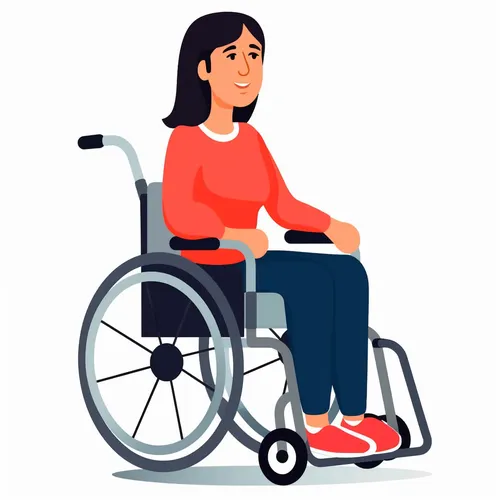What is Multiple Sclerosis?
Multiple sclerosis (MS) is a chronic condition affecting the central nervous system (the brain and spinal cord). It is caused by damage to the myelin sheath, a protective layer surrounding the nerve fibres. When myelin is damaged, electrical signals slow down or become distorted, leading to the various symptoms of MS. The damaged myelin forms scar tissue, known as plaques or lesions, in the brain and spinal cord.
MS is a fairly common condition, affecting around 107,000 people in the UK, according to a 2010 study. The number of people diagnosed grows by over 5,000 each year.
There are four main types of MS:
- Benign MS – Usually only causes mild attacks followed by full recovery. Minimal disability after 10-15 years means it can be classified as benign MS.
- Relapsing-remitting MS – Most people are diagnosed with this initially. It involves attacks followed by periods of remission when symptoms disappear or reduce. Each relapse can bring new symptoms.
- Secondary progressive MS – Begins like relapsing-remitting MS but over time attacks continue without periods of remission. Usually develops 15-20 years after initial diagnosis.
- Primary progressive MS – Symptoms steadily worsen from the outset, with no periods of remission. Accounts for 15% of MS cases.
What Causes MS?
The exact cause remains unknown but research points to several factors:
- Damage to myelin is partly due to an abnormal autoimmune response. In autoimmune diseases, the immune system attacks the body’s own cells and tissues instead of just fighting infections. With MS, it targets myelin.
- A virus could play a major role in triggering the autoimmune reaction, although no single “MS virus” has been identified. Common viruses like glandular fever, measles or herpes that lie dormant may act as triggers.
Additional research indicates that a combination of genetic and environmental factors may contribute to the development of MS. Having a close family member with MS slightly increases your risk. Certain genes are linked to increased susceptibility. Smoking and low vitamin D levels are also associated with higher MS risk.
Who is Most at Risk of MS?
- Women are around three times more likely to develop MS than men.
- Onset is typically between ages 20-40.
- MS is rare in children.
- MS is most prevalent in Northern Europe, North America, Australia and New Zealand. Rates are far lower in certain ethnic groups like Scandinavia’s Sami people and Canada/New Zealand’s indigenous populations.
- MS is not contagious – you cannot “catch” it from someone who has it.
What are the Symptoms?
Symptoms depend on which areas of the central nervous system are damaged and can vary significantly between individuals. They may include:
- Numbness, tingling and pins and needles in the limbs
- Impaired balance and difficulty walking
- Clumsiness and lack of co-ordination
- Blurred vision and eye pain
- Frequent, urgent urination
- Sexual dysfunction
- Poor concentration and memory
- Slurred speech
- Extreme fatigue
- Depression and mood changes
Additional early signs can include dizziness, partial vision loss, weakness or tremors in limbs, and loss of bladder control. MS symptoms often initially appear on one side of the body or in the legs.
How is MS Diagnosed?
There is no single, definitive test for MS. A diagnosis requires:
- Detailed medical history
- Spinal tap (lumbar puncture) to test spinal fluid for antibodies
- Evoked potential tests assessing nervous system responses
- MRI scans showing brain/spinal lesions
- Neurological exam checking sensations, reflexes, balance etc.
The variable symptoms and lack of a clear diagnostic test means MS can be challenging to conclusively identify. Ongoing communication with your doctor is important.
Is There a Cure?
Unfortunately there is currently no known cure. However, treatments can help manage symptoms and slow progression.
What Treatments Help?
- Steroids – Used to treat relapses
- Interferon beta injections – Help reduce relapses and delay disability progression
- Muscle relaxants – For spasms caused by nerve damage
- Physiotherapy – Improves balance and mobility
Additional medications used for symptom management include baclofen for muscle spasms, fampridine to improve walking, and amantadine for fatigue. Some find complementary therapies like massage or acupuncture beneficial alongside conventional treatment.
What is the Typical Progression?
The course of MS is highly unpredictable. In most cases, symptoms fluctuate, coming and going over time. Progression in the first 5 years after diagnosis may indicate the likely ongoing pattern. For many people with MS, disabilities remain relatively minor, like fatigue or a slight limp. But MS can potentially cause significant disability and coordination problems.
Lifestyle Tips
- Learn as much about MS as possible – this can reduce anxiety about early symptoms
- Get plenty of rest and relaxation to avoid fatigue triggering symptoms
- Follow a balanced, healthy diet to support overall wellbeing
- Do gentle exercise like walking to stay active without overexerting yourself
Photo “Wheelchair” by Anthony Cunningham for Zoom Health
Zoom Health is a leading UK supplier of Home Health Tests and Earplugs





